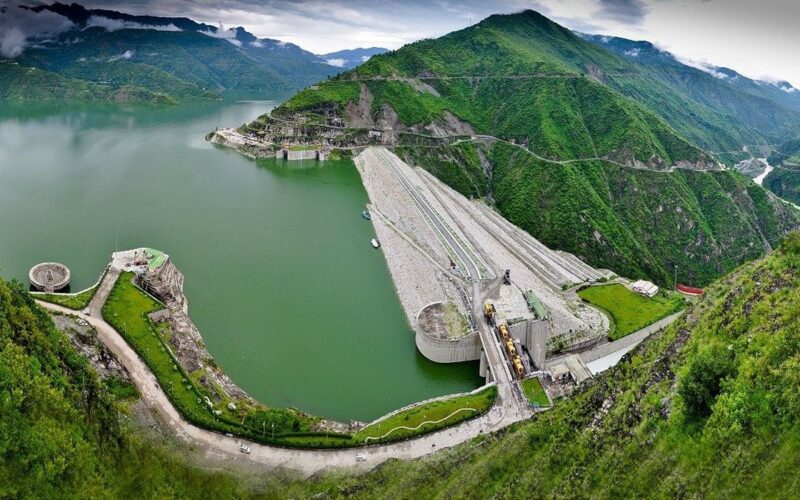Uttarakhand and Himachal Pradesh, nestled amidst the awe-inspiring peaks of the Himalayas, are blessed with breathtaking beauty and abundant natural resources. However, the rapid construction of dams in these regions has transformed the landscape, reshaping their ecosystems and climate dynamics. While dams have been pivotal in meeting energy demands, managing water resources, and preventing floods, their presence has led to a complex interplay of environmental factors, influencing climate change, cloud bursts, excessive rainfall, and glacier melting. In this in-depth blog post, we embark on a journey to explore the technical intricacies of how dam construction impacts these critical aspects of the region’s environment.
The Nexus between Dams and Climate Change
Dams, while not direct contributors to greenhouse gas emissions, play a significant role in altering the carbon cycle. The construction of reservoirs often necessitates deforestation, leading to the release of vast amounts of carbon dioxide (CO2) into the atmosphere. The technical aspect lies in quantifying the carbon loss due to deforestation and accounting for the subsequent emissions. Accurate measurements are crucial for understanding the overall impact of dams on the carbon balance and their contribution to global warming.
Additionally, the anaerobic conditions prevailing in dam reservoirs facilitate the production of methane (CH4) through organic matter decomposition. Accurately measuring methane emissions and understanding the factors influencing its production is crucial for assessing the greenhouse gas inventory of dam projects and formulating mitigation strategies.
Unraveling the Mystery of Cloud Bursts
The technical aspect of understanding cloud bursts lies in atmospheric dynamics and precipitation processes. Dams influence local weather patterns by modifying the moisture distribution and temperature gradients in the atmosphere. The presence of large reservoirs elevates atmospheric humidity levels, and the resulting updrafts promote cloud development. Advanced weather monitoring systems and numerical models are essential for studying the intricate interactions between dam-induced changes and the occurrence of cloud bursts. Such technical insights can help design early warning systems and emergency preparedness plans to mitigate the impacts of cloud bursts.
The Torrential Tale of Excessive Rainfall
To comprehend the technical aspects of excessive rainfall in dam-affected regions, one must delve into the realm of hydrological modeling. Dams alter the natural river flow regime, leading to variations in water releases downstream. A thorough understanding of river discharge patterns, flood routing, and potential spillway operations is vital for predicting and managing excessive rainfall-induced floods. Hydrological models can aid in assessing the impact of dams on downstream flooding and devising optimized reservoir operation strategies to mitigate adverse consequences.
Melting Glaciers: A Grim Reality
The technical understanding of glacier dynamics encompasses advanced remote sensing techniques, such as satellite-based imagery and laser altimetry. These tools provide critical data on glacier mass balance, ice melt rates, and changes in glacier extent. Integrated with climate models, these data aid in quantifying the impact of dams on glacier melting. Additionally, computational models help simulate glacial lake behavior, enabling researchers to assess the potential risk of glacial lake outburst floods (GLOFs). Such technical insights are vital for designing adaptation strategies and ensuring the sustainable management of water resources in a changing climate.
Harmonizing Development and Preservation
The development of dams in Uttarakhand and Himachal Pradesh is undeniably essential for meeting the region’s growing energy needs and managing water resources. However, achieving harmony between development and environmental preservation requires a comprehensive understanding of the technical aspects of dam construction’s impact on climate change, cloud bursts, excessive rainfall, and glacier melting.
Technological advancements in monitoring systems, modeling tools, and remote sensing enable us to gain a deeper insight into the complex environmental interactions caused by dams. Integrating these technical insights with community participation and robust environmental assessments is vital for formulating sustainable dam development strategies. By harnessing the power of technical knowledge, we can pave the way for a resilient and ecologically balanced future for the breathtaking realms of Uttarakhand and Himachal Pradesh.
